3rd Year
MONTHS
31-32
3rd Year – Months 31-32
Help Shy Toddlers Learn How to Play With Others
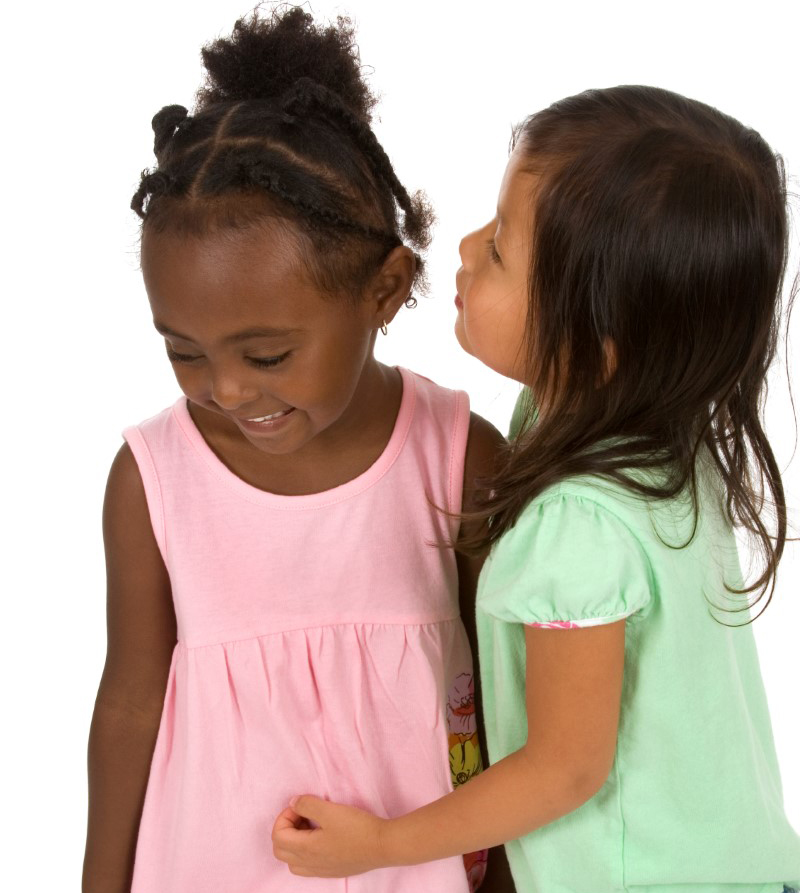 Shyness is normal for most toddlers at some point. Some toddlers are only shy when they are tired or in a new situation. Some toddlers are only shy with adults. Others are shy most of the time. Most children are shy at least some time until they are school age. Some children will never grow out of it. If your toddler is shy, be patient. Instead of pushing them to talk or join a group, let them watch and join when they’re ready. You can help them join a group of playmates by:
Shyness is normal for most toddlers at some point. Some toddlers are only shy when they are tired or in a new situation. Some toddlers are only shy with adults. Others are shy most of the time. Most children are shy at least some time until they are school age. Some children will never grow out of it. If your toddler is shy, be patient. Instead of pushing them to talk or join a group, let them watch and join when they’re ready. You can help them join a group of playmates by:
- Going with them to join in the play.
- Sitting with them.
- Talking to them about what is going on. “Look, they’re playing ball. You like to play with balls too.”
- Helping them find ways to play. “Try rolling the ball back to them.”
What’s It like to Be 31-32 Months Old?
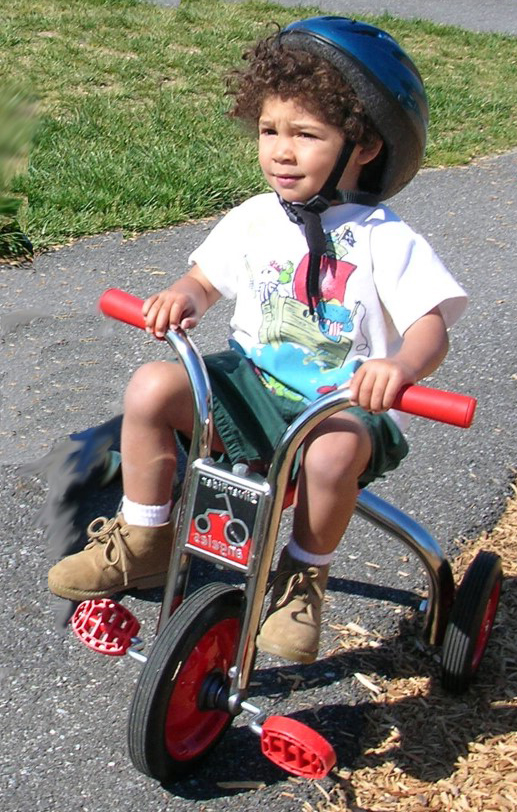
How I Grow
- I am getting better at using my hands to open things.
- I can hold things steady in my hands, like cups. Now is a good time to start teaching me how to drink from a cup without a lid.
- I am starting to turn pages of books by myself.
- I can bend over while standing to pick things up.
- I am able to start pedaling. It may take me some time to learn.
How I Feel
- I like to show my friends how much I like them.
- I don’t get scared when you leave me somewhere familiar.
- Keeping my routine is important to me.
- I am starting to try being “sneaky.”
How I Talk
- I am getting better at expressing my thoughts.
- I am starting to tell you how I feel.
- I can say a lot of words – as many as 1,000!
- I understand most of what you say to me.
- I am starting to say my name and maybe my age.
Some children do things earlier or later than described here. Most differences are normal. Focus on what your child can do and get excited about each new skill. If you notice that your child is lagging behind in one or more areas for several months, use this list to talk with your doctor about your child’s development.
This Is What a Typical Toddler Can Do at about 2-3 Years of Age:
- Stand on one foot with a little help.
- Attempt to turn pages of a book or magazine on their own or after being shown how to do it.
- Use a cup and spoon.
- Express feelings through behavior —such as kicking, holding breath, running away.
- Point, touch, or look at something —such as shoes, a toy, or clothing.
- Say simple words or sounds.
- After being given a block, the child follows two out of four instructions, such as “put on table,” “put on chair,” “give to mama,” “give to me.”
Make the First Day of Child Care as Positive as Possible
 Leaving your child in child care or preschool for the first time may be hard for both of you. Your child will face new adults, new children, new places, new things, new routines, and new limits. They are used to your comfort, help, and protection.
Leaving your child in child care or preschool for the first time may be hard for both of you. Your child will face new adults, new children, new places, new things, new routines, and new limits. They are used to your comfort, help, and protection.
They may be scared about being alone—and angry with you for leaving them. You may be worried that the teachers won’t care for them the way you would, or that they may ignore or hurt them. You may worry that they will cry or misbehave. These feelings are normal.
- You have taken the first step by carefully selecting child care that you think is right for your child. You have found child care workers that you like and can begin to trust. See the last newsletter for how to choose child care.
- Talk with your child about what is going to happen. They may not understand everything you say, but they will pick up your feelings of confidence. Say, “We will go to your new school. I will help you put your coat away and sit with you for a little while. Then, you get to stay and play while I go to work. After naptime, I will come back to get you. We will come home and fix supper.”
- If possible, visit the program with your child before their first full day. Let them watch and explore with your help and protection. Talk with the teacher about your child before they begin the program. Tell the teacher about your child’s eating and sleeping schedule, allergies, and other health concerns. Talk about what upsets your child and how they can be comforted.
On the day your child starts in a new child care program:
- Bring all the forms, clothes, equipment, and food that the teachers request.
- Bring one of your child’s favorite things, such as a stuffed animal, a blanket, or a toy car.
- Arrive a few minutes early so you can talk with the caregiver, put away your child’s things, and sit with your child to watch what is going on.
- With a calm face and hugs and kisses, say “goodbye” when it is time to leave. Tell them when you will return. Of course your child may cry, or scream, or kick, or retreat to a corner with their thumb in their mouth. They may like this place, but they want you with them. Even though it is very hard, keep walking.
- It may help to call the teacher in an hour to learn how your child is doing. When you pick up your child, greet them with warmth and words that show you know it was hard for them. Tell them that you are proud that they made it through the day. Don’t be surprised if they are both glad to see you and mad that you left them.
Learning how to say “goodbye” to people we love is difficult. Most of us struggle with this all our lives. This may be your child’s first experience in saying “goodbye” to you on a daily basis, and it will take time for you both to learn how to do this easily.
Punishment Does Not Teach the Right Thing to Do; Teaching Does
When children misbehave we need to stop them, let them know what they have done wrong, and tell them why it is wrong. Then, we need to teach them the right thing to do.
- When we punish children, we expect to make them suffer physically or emotionally in “payment” for doing something wrong. Punishment usually does stop the unwanted behavior for a while, but it often causes other problems.
- Punishment may cause children to fight back with aggressive or naughtier behavior. It may teach them that they can do what they want as long as they are willing to “pay the price” of punishment. They could feel like “bad” children, unloved and unlovable and give up trying to please you.
- Punishment usually does not teach children what they should do — only what they should not do. It does not teach personal responsibility.
- A young child who has done something wrong may simply not know what they should have done differently. If Johnny throws a toy truck at his sister because she won’t let him play with her ball, he needs to learn why he should not throw trucks. He also needs help in learning how to take turns or find another toy to play with.
This calls for teaching, not punishment. Of course you need to keep Johnny from throwing trucks. You also need to tell him in simple words why he should not throw the truck and how he can play with other toys until it is his turn to play with the ball. If you are patient and keep reminding him, Johnny will learn how to cooperate. Punishment alone could not have taught him how to wait for his turn.
Toddlers May Be Angels at School and Terrors at Home
After starting childcare, some children change their eating and sleeping patterns. Some need more time curled up in their parents’ laps or sucking their thumbs. These things will change as your child becomes more comfortable in the child care program.
- Long after your child can say “goodbye” without tears or anger, they may show signs of this stress when they are with you. Children can be angels at school (where they want to please these new adults) and terrors at home (because they feel safe and can blow off steam).
- It helps if you drop in for a visit to see how things are going when no one expects you. If your child doesn’t know you are there, you will get a better idea of how the caregiver and your little one are doing.
Remember that you are helping your child learn how to adjust to changes that may be frightening. We all need to learn how to do this!
Give Toddlers Easy Chores
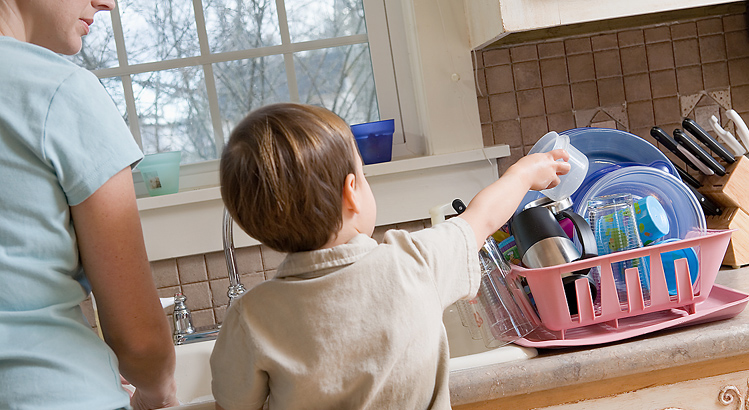
Helping around the house teaches children new skills. Start with tasks that you can do together —and last about 5–10 minutes. This lets your child feel proud of doing something with you. It is also a great way to spend time together. Toddlers can:
- Pick up toys and put them away
- Sort colored and white laundry
- Take clean clothes out of the dryer
- Set the table with forks and spoons, not knives
- Tear lettuce for salad
- Water plants
- Put pet food in bowls
- Put away unbreakable groceries —such as toilet paper, paper towels
Bed Wetting Is Common
Your toddler may be using the toilet, but some are not. Even toddlers who have learned to use the toilet may still wet the bed. Bed wetting is common through age 3. If your toddler is wetting the bed regularly:
- Make sure they wear a diaper or training pants to bed.
- Put a waterproof cover over the mattress.
- Don’t give them liquids after dinner.
- Make sure they use the toilet before they go to bed.
- When they start to have dry diapers regularly in the mornings, they may be ready for nighttime training. Try letting them sleep in their underwear. Keep a waterproof cover on the mattress for accidents.
- Leave a light on in the bathroom for late night trips. It may take up to 2 weeks for them to learn to stay dry all night. If this does not work, then your toddler is not ready yet. Dress them in a diaper for bed and try again in another month.
Get an Assessment to See if Your Child Is Developing Normally

A developmental assessment measures your child’s progress. If a toddler falls behind, they may have a problem that requires special help. The sooner you can get that help, the better.
- Information from parents is especially important, since parents know their children better than anyone else. Parents know what their child can do even if their child is shy about doing these things in front of the doctor.
- If lags or delays are found during the physical exam, additional testing should be done by experts in child growth and development. Parents should ask for this service.
Young Children Do Not Understand Lying or Stealing
It is common for toddlers to say things that may not be true and to take things they want even if these things do not belong to them. Children who do this are not trying to misbehave. What they need from you now is gentle teaching, not punishment.
- Tell your child you do not want them saying things that are not true or taking things that are not theirs.
- Explain. When they lie to you, remind them that you want them to be truthful. Do not call your child a liar or a thief. They could believe these labels and feel there is nothing they can do to change.
- Your child is learning about right and wrong. They are finding out the difference between make believe and reality. They are learning that they cannot get what they want by taking it. This kind of learning and self-control takes time.
- Be patient, firm, and loving. Show them that you do not lie or steal. Your child will imitate you —not because they are afraid of punishment, but because they want to do what is right.
Encourage Grandparents to Share in Your Child’s Life
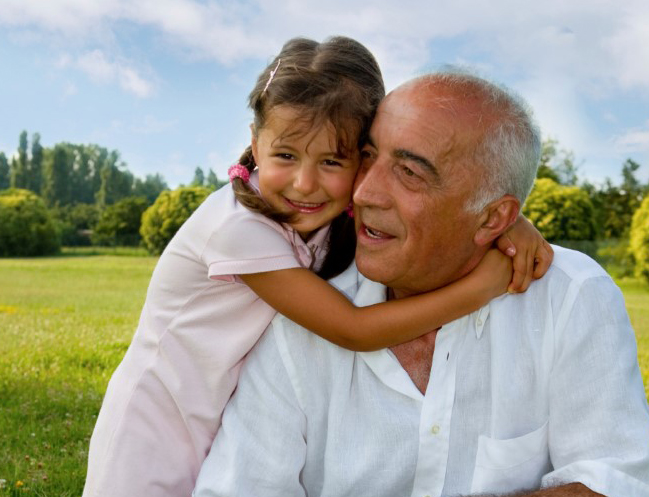
Have you noticed how much your child enjoys grandparents, aunts, uncles, older friends, and neighbors? You are the most important adult in your child’s life, but your child learns from other caring adults that they can trust, love, and enjoy.
Other caring adults make your child’s world more varied, interesting, and exciting. Each one has something important and different to share and to teach. Your toddler needs these adult relationships. Do all you can to encourage them. They are a precious part of life.
What Doesn’t Belong?
- Draw 4-5 pictures or cut out 4-5 shapes that are all alike except one. Start with pictures or shapes obviously different, such as four pictures of trees and one picture of a house or four red triangles and one white circle.
- Later you can make the “different” pictures more like the others. For example, four dogs and a cat or four small red triangles and one large red triangle.
- Ask your child to show you the one that is different from the others. Take turns. You can also play this with actual objects found around the house and in the yard, such as four spoons and a fork or four red flowers and a white one. Your child is learning the word “different” and what it means.
Toddlers Can Feed Themselves Using Spoons or Their Fingers
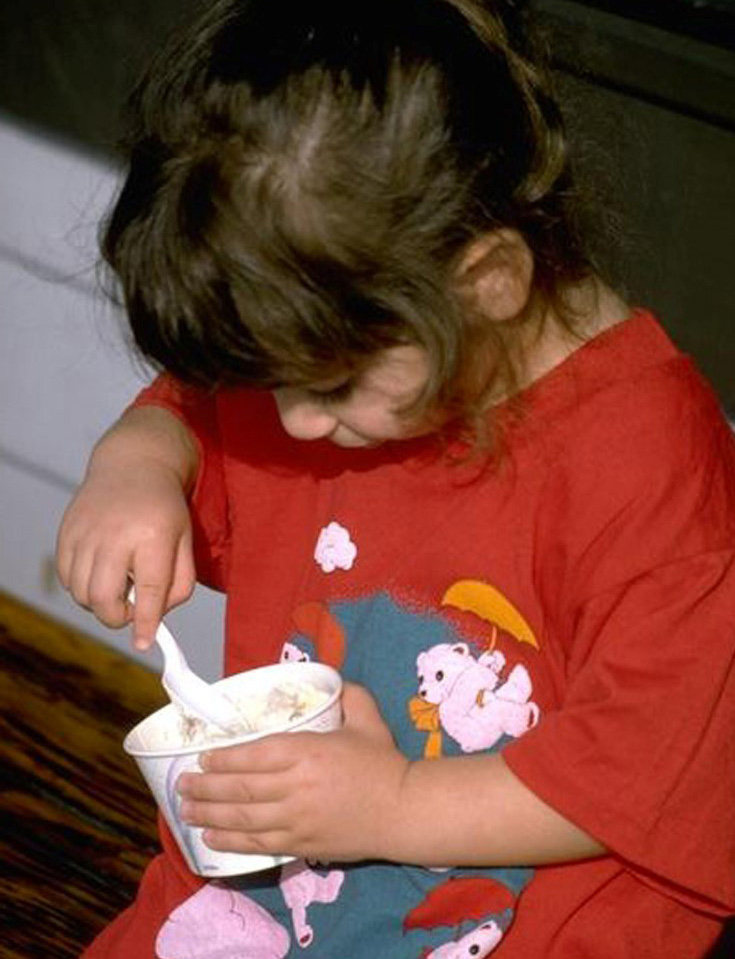
Your toddler is at an age where they can feed themself. Some toddlers are good enough with their hands to use child-sized spoons on their own. Others may still use their fingers.
Toddlers may learn to use a spoon by using their fingers to put food on the spoon. Other times, they may use their fingers to take the food off the spoon and put it in their mouths. It may be funny and messy, but your toddler needs practice to learn.
Nutritious Snacks Are Easy to Make
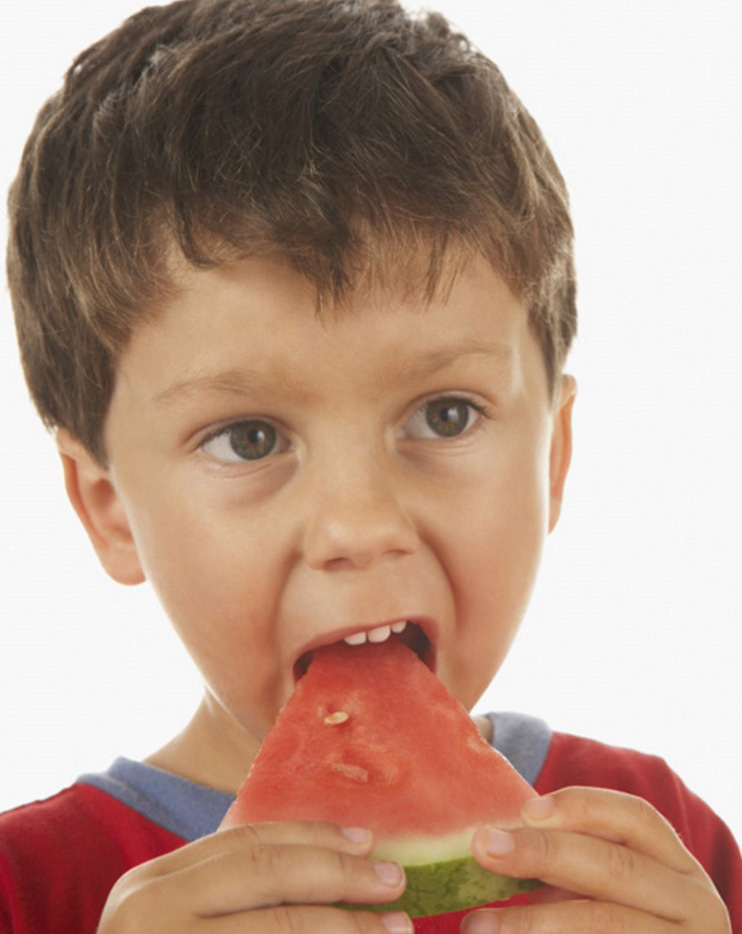
Your child was born liking sweet things. This is why snacks like popsicles, cakes, cookies, and candy are so appealing. They are all high in sugar and very sweet. But these snacks offer little in the way of good nutrition. They provide energy but almost no vitamins, minerals, or protein.
There are many foods that are naturally tasty and will appeal to your child.
- Fruit or fruit juice. Instead of fruit drinks with sugar, offer fruit juice. Full strength fruit juice may be too strong tasting. When you use frozen fruit juice, add an extra can of water. If you buy bottled or canned fruit juice, mix a little water into each cup of juice. This will give it a milder flavor, and it will stretch your food dollar. Limit your child to one serving (about ½ cup) of fruit juice a day.
- Fruit juice popsicles. Almost all children like fruit juice popsicles. Pour fruit juice into small paper cups and stick plastic spoons in as handles. Cover with aluminum foil to hold the spoon handles in place and freeze.
- Snack-size pizza. Split an English muffin and spread about 2 tablespoons of tomato sauce on half of it. Grate some cheese and sprinkle that over the top. Put your mini pizza under the oven broiler or in a toaster oven until the cheese melts.
- Easy quesadillas. Sprinkle cheese on half of a flour tortilla. Fold the other half over the cheese half. Heat in a frying pan at low heat until the cheese has melted.
- “Ants on a log.” Place peanut butter down the center of a celery stick. Put some raisin halves on top. It’s ready to eat. This snack is better for toddlers who have all their teeth and can chew well. They should brush right after eating it since raisins can cause tooth decay. Toddlers love to help make this snack!
Avoid Using Food for Comfort
Sometimes, food is used to comfort toddlers who are upset. This teaches toddlers that food is not just for eating when hungry — and can start unhealthy eating habits. When parents give children a special food for comfort, children want to eat more of that food when they are upset.